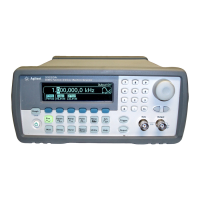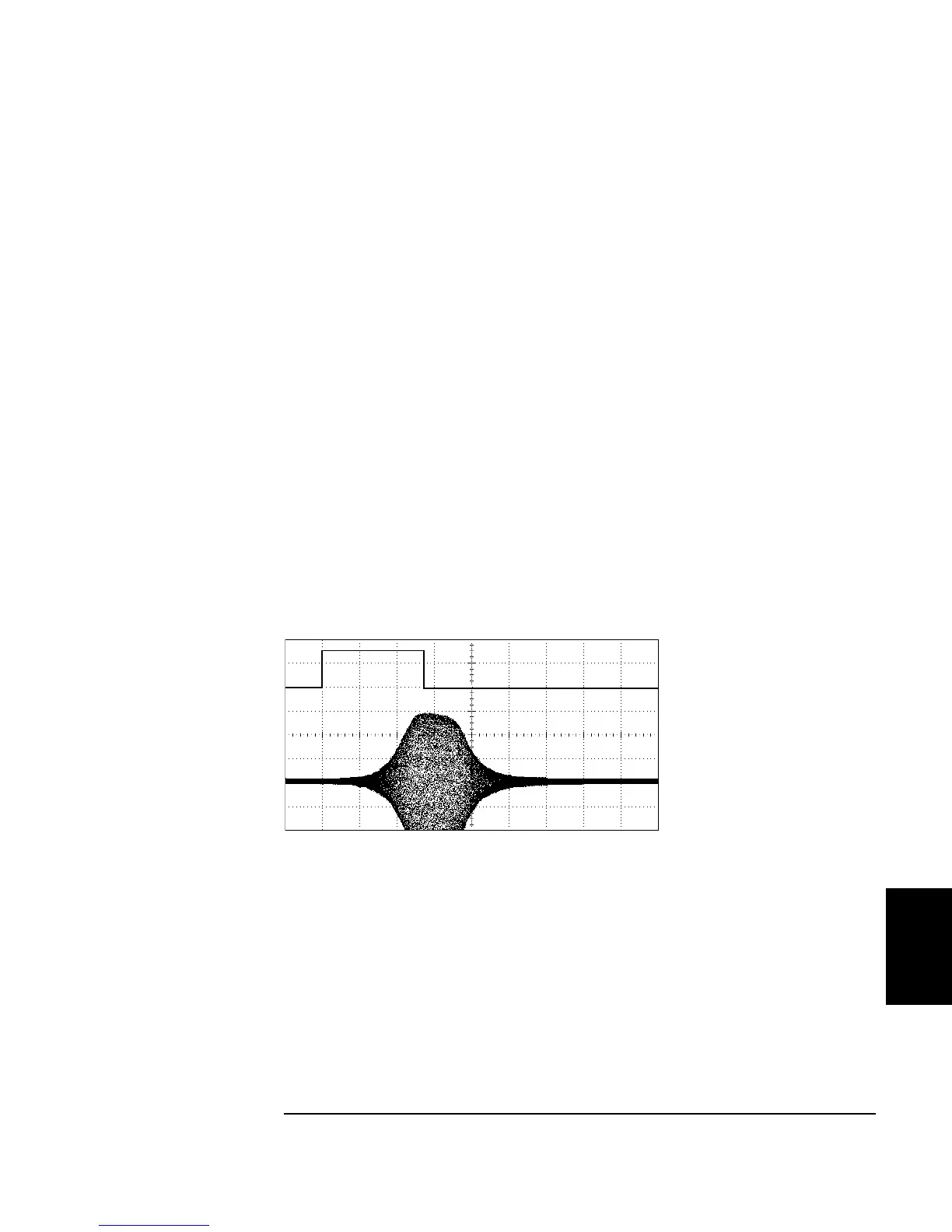343
Chapter 7 Tutorial
Burst
4
7
connector can be configured as an output to enable the 33220A to trigger
other instruments at the same time as its internal trigger occurs.
Sync and Marker Signals The output from the front-panel Sync
connector goes “high” at the beginning of each sweep. If you have
disabled
the Marker function, the Sync signal goes “low” at the midpoint of the
sweep. However, if you have enabled the Marker function, the Sync
signal goes “low” when the output frequency reaches the specified
marker frequency. The marker frequency must be between the specified
start frequency and stop frequency.
You can use the Marker function to identify a notable frequency in the
response of a device under test (DUT) – for example, you may want to
identify a resonance. To do this
, connect the Sync output to one channel
of your oscilloscope and connect the DUT output to another channel.
Then, trigger the oscilloscope with the rising edge of the Sync signal to
position the start frequency on the left side of the screen. Adjust the
marker frequency until the falling edge of the Sync signal lines up with
the interesting feature in the device’s
response. You can then read the
frequency from the front-panel display
of the 33220A.
Sweep with Marker at DUT Resonance
Burst
You can configure the function generator to output a waveform with a
specified number of cycles, called a burst. You can use burst in one of
two modes: N-Cycle Burst (also called “triggered burst”) or Gated Burst.
Sync Output
DUT Output

